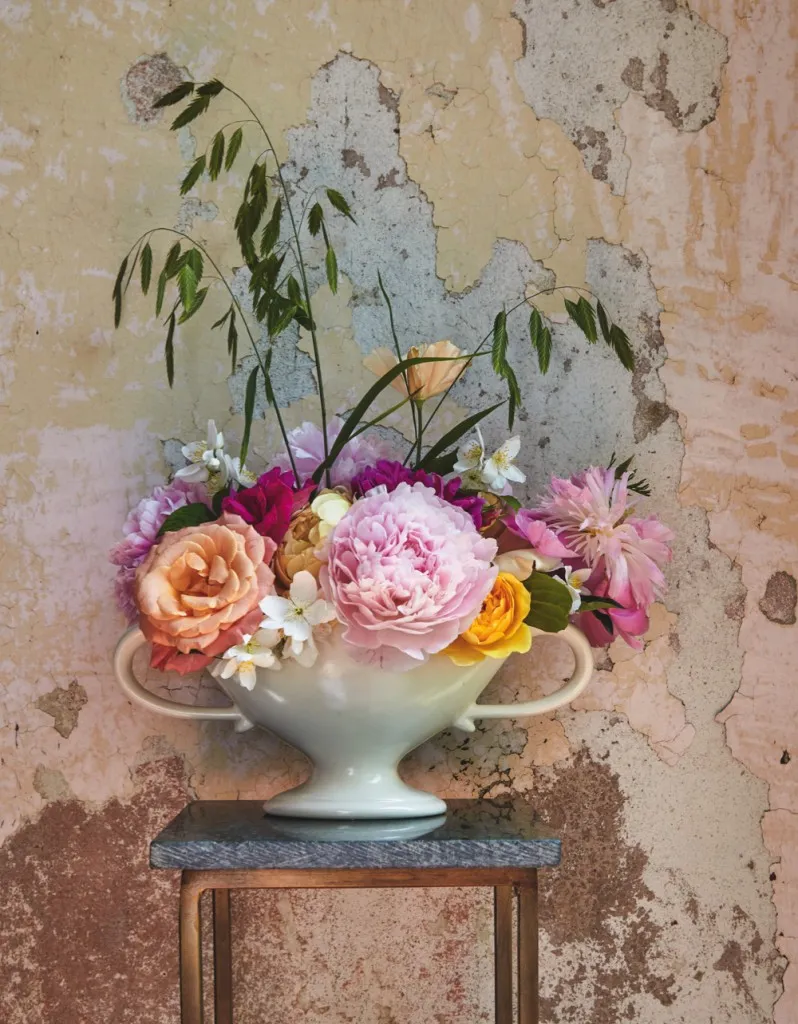A fresh bunch of seasonal blooms is an easy way to bring colour and personality to your home. But why settle for a standard vase? Here we explain how you can create unusual and beautiful floral displays in your home using the antique and vintage containers that you may already own. All you need do is add the flowers!
Create displays using vintage kitchenalia
Nothing says spring like a sweet-smelling display of hyacinths, tulips and daffodils straight from the garden! If you're short on vases, why not raid the other vintage or antique vessels in your home? Old pudding bowls, flour bins, bread crocks or jelly moulds are perfect for creating unusual seasonal displays when stuffed with floral foam or chicken wire.

You might also like the best faux flower bouquets
Stack up vintage teacups and fill with short-stemmed flowers
If you can’t resist a pretty vintage teacup at a charity shop or a brocante, then this is the perfect look to make the most of your hoard. Assemble a mix of teacups with floral transfer patterns or hand-painted designs and plain glazed cups in a selection of pastel tones. You can even include cups with small chips – as long as they hold water, they can still be successful vessels for this charming display.
Arrange your collection on a shelf – choose flowers with bigger blooms and sturdy stems that will sit in the shallow vessel, such asrosesandpeonies. If the display area needs an extra hit of vintage florals, pin up pretty printed vintage fabric and place taller floral decorated vases towards the back of the shelf. Leave a few cups unfilled and dot between the flowers to add interest.
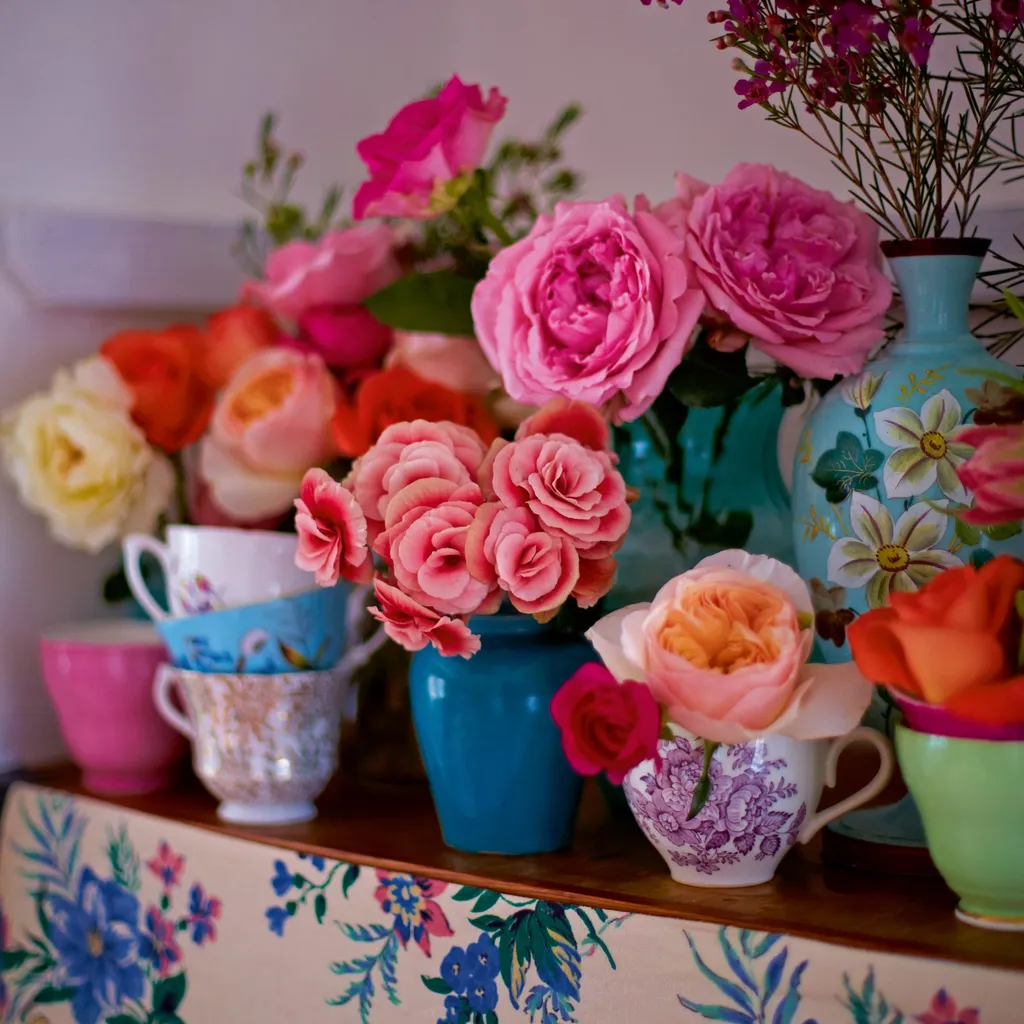
Mix and match antique vases
Nothing says spring like an abundance of blooms loosely arranged in an eclectic assortment of antique vases. For a truly arresting display, choose vases from different eras in a range of sizes, colours, shapes and materials – glass, metal and ceramic – to create a look that’s joyful and uplifting. Add interest by positioning tall vases off-centre, with tiny vessels towards the front. The flower shades you choose will unite the collection. Think about where you want to display your vases – here, the distressed wall lends a rustic, bohemian feel.
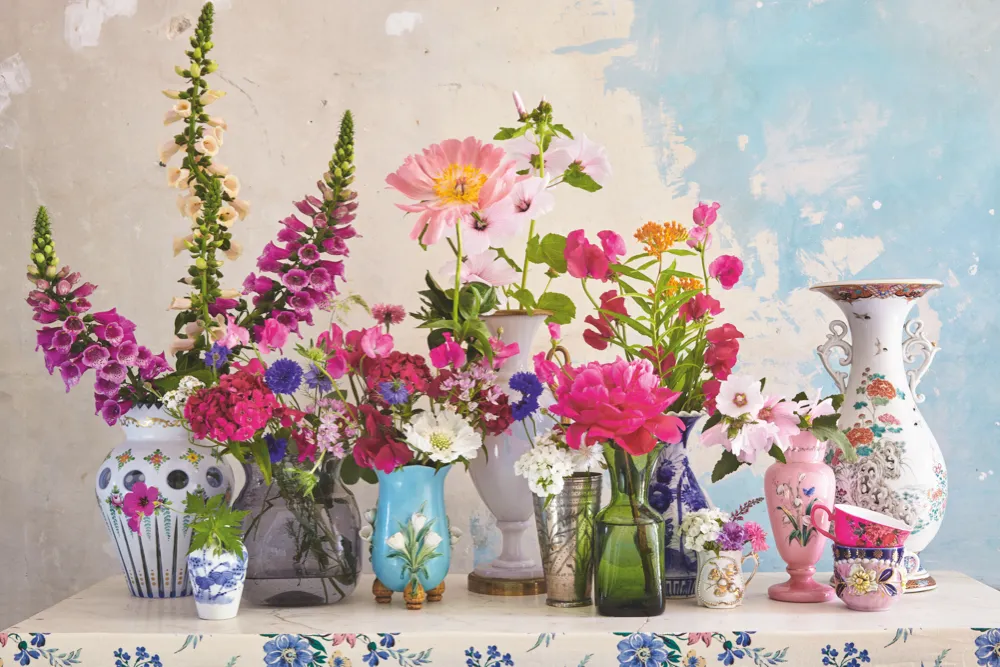
You might also like the best dried flower bouquets
Use an antique rug or wall hanging as a backdrop for your display
A beautiful antique rug doesn’t have to be reserved for underfoot – use one as a wall hanging and in turn create an interesting setting for a collection of containers filled with seasonalblooms. You will need a secure way to hang the rug, especially if it is heavy – try wood and Velcro, a wall-mounting kit or carpet clamps.
Foxglovesalways look lovely as cut flowers. If you have them in abundance in your garden, and can spare a few stems, they will instantly add height and drama to an arrangement. The bell flowers will bloom longer in the vase if you condition them straight after picking, so soak them in a container of water for a few hours. Before you start to make your arrangement, strip off the leaves from the bottom third of the stem, then trim two inches from the base of each with a sharp knife – cut at an angle and submerge the stems in a vase filled with cool water.
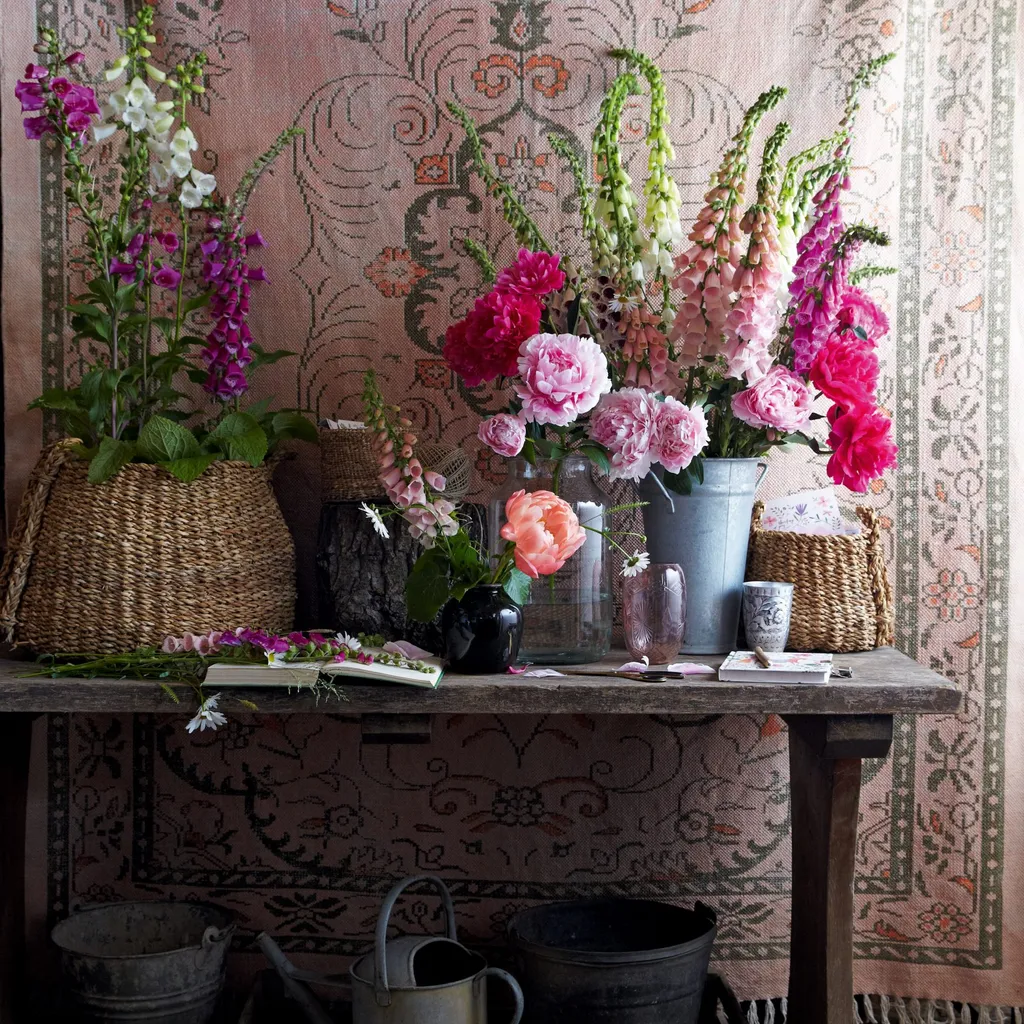
Choose vases in a similar colour palette for a cohesive display
Blue and white ceramic vases and vessels look beautiful grouped en-masse, especially when filled with vibrant flowers in contrasting shades of peach, pink and red.‘In the 1860s, lots of European collectors and interior decorators went mad for Chinese blue and white porcelain. Feeding this demand, there was an explosion of brand new wares made in the 17th-century style. The most famous of these were the reproductions of sought-after ginger jars, some of which (the genuine ones) were fetching previously unheard of sums for ceramics,’ explains Lars Tharp, ceramics and oriental specialist and Antiques Roadshow expert.
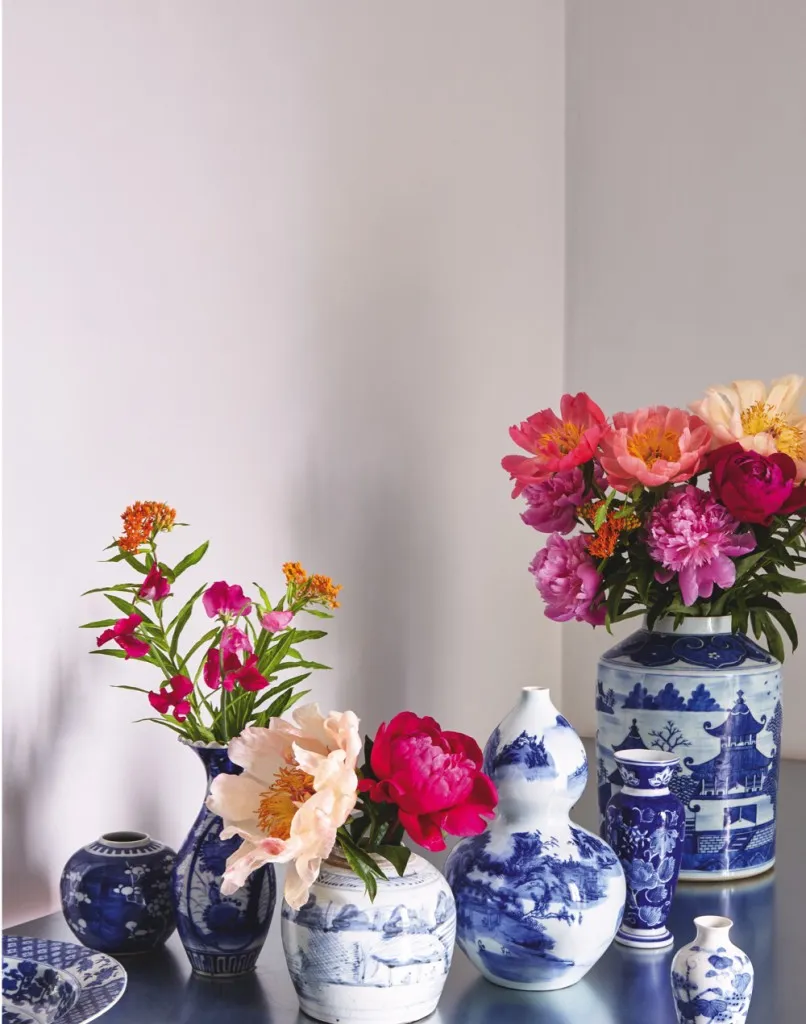
Fill Japanese vases with branches of spring blossom
For over 100 years Japan isolated itself from the outside world by all but closing her frontiers, until 1854 and the Treaty of Yokohama, when Japanese trade with Western nations resumed. When Japanese pottery (mostly ‘Satsuma’ ware) and porcelain (‘Imari’, ‘Kutani’ and ‘Arita’ ware) flooded into Europe, the asymmetry of the designs took Europeans by surprise. Japanese ceramics vary in price, but vintage pieces inspired by traditional designs are easy enough to come across at flea markets, charity shops or local auction houses.
Group together Japanese ceramics of varying heights and sizes for an elegant chinoiserie-inspired display on a mantelpiece or sideboard. In springtime, why not take to the garden or hedgerows and snip a handful of branches from a blossom or magnolia tree? Simply cluster together the vessels and fill with a spray of the leafy fronds: lovely.
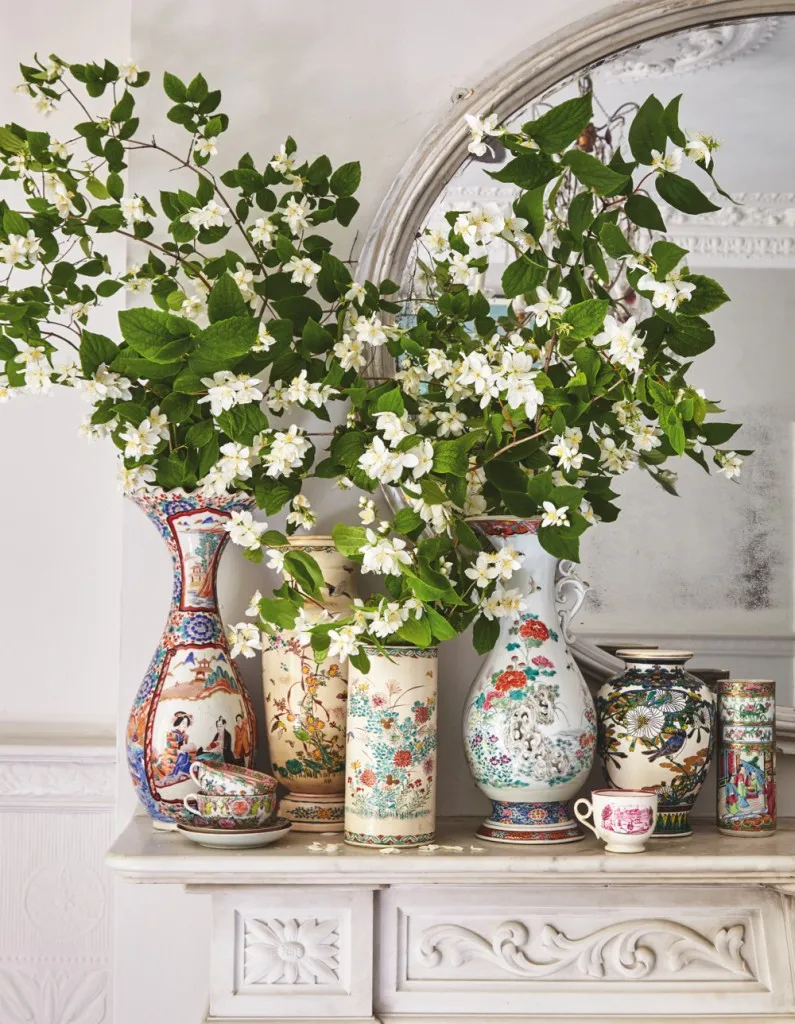
Create a contemporary look with mid-century Scandinavian glass vases
Sweden was the most important glass-making nation during the mid-century period. It manufactured sleek, understated vases, mostly in the Småland region, which is in the south of the country and still renowned for production, currently having 13 glassworks and studios. Mid-century glass vessels and bowls come in an array of beautiful jewel-toned colours and can often be found at flea markets or on eBay, plus their contemporary shape and style means they can easily blended with contemporary vases from the high street. The sculptural form of these vases means they look beautiful filled with natural, foraged bouquets of willowly wildflowers (such as cornflowers and forget-me-nots), leaves and grasses.
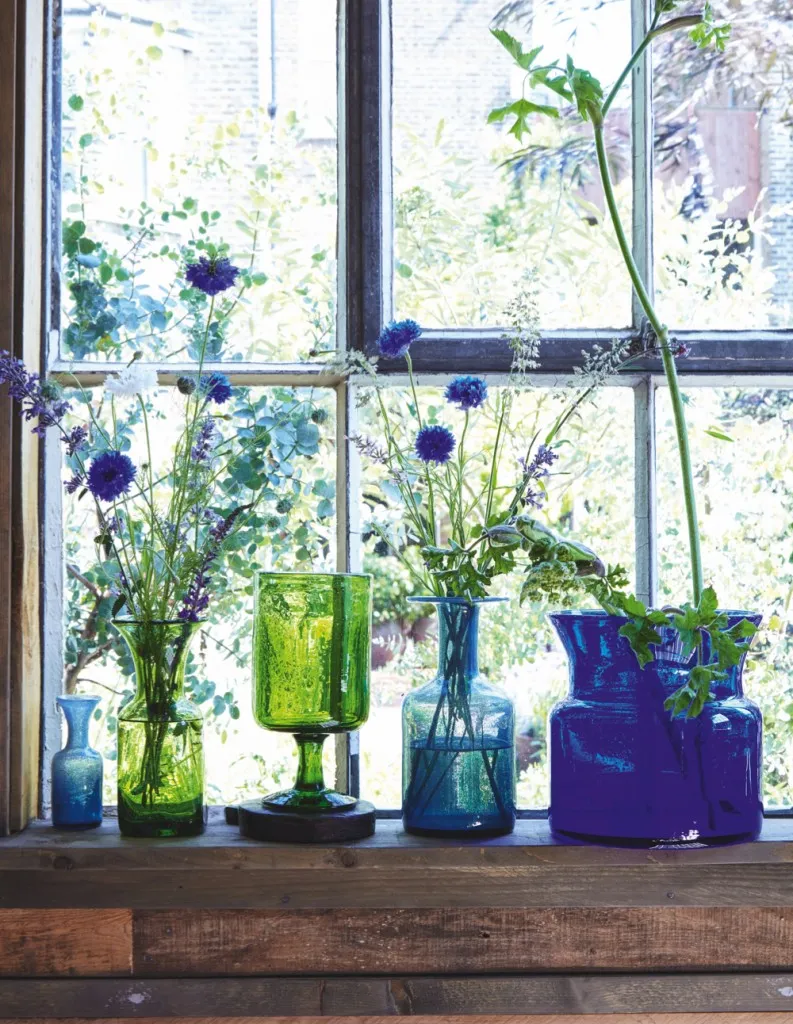
You might also like how to create a spring tablescape
Use Constance spry vases to display shorter flowers or floral offcuts
‘Constance Spry loved creating unusual, free-form displays with berries and kale leaves as well as flowers,’ reveals John Mackie, one of the founding directors of Lyon & Turnbull auction house in Edinburgh. ‘She couldn’t find the right vases to suit her creations, so she commissioned a range at Fulham Pottery.’ One of Spry’s employees, Florence Standfast, designed a 1935 Constance Spry collection of elegant, twin-handled ‘mantle’ vases inspired partly by ancient Greek and Egyptian forms.
Though real-deal Constance Spry vases can cost hundreds of pounds, plenty of similar designs were crafted during the 1930s and 40s, and can be picked up for a snip at charity shops or flea markets. Simply fill with floral foam or chicken wire to create beautiful table centrepieces with leftover flowers, or fill with compost and use to plant up spring hyacinth or daffodil bulbs.
